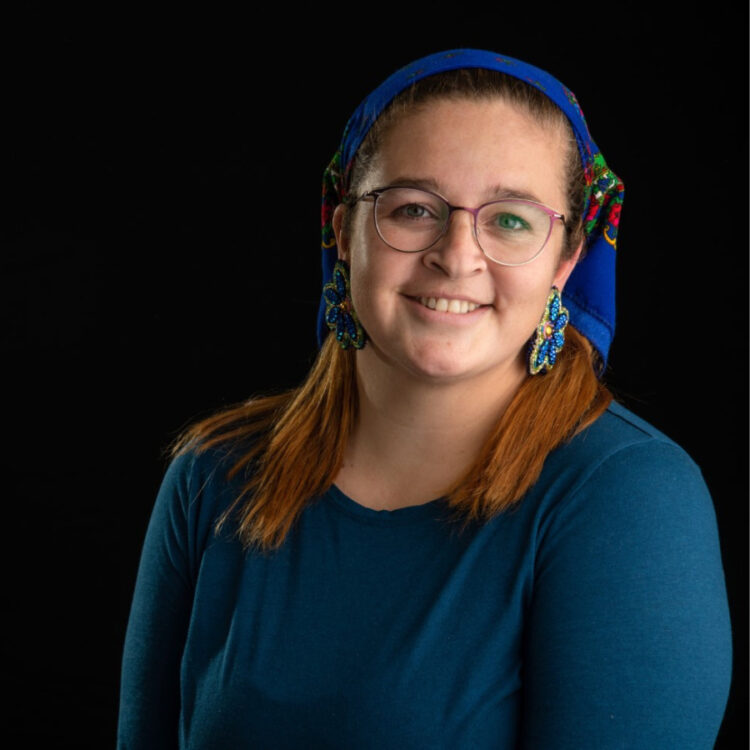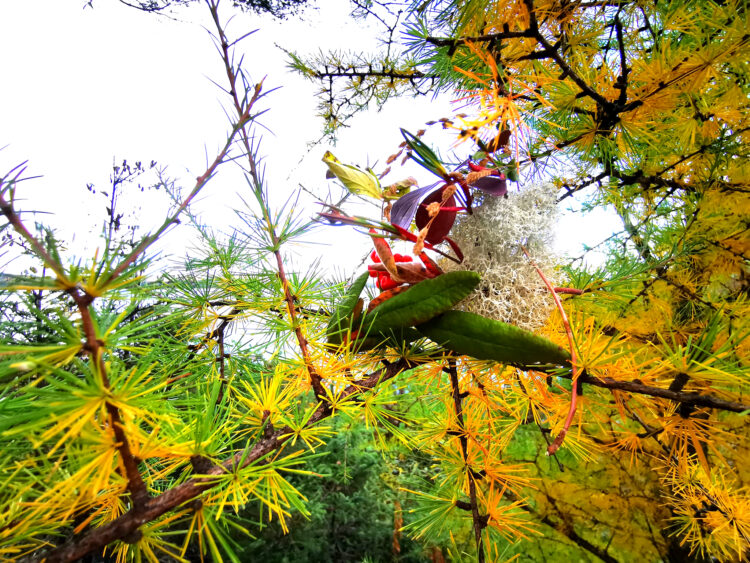


Amélie Courtois

Biography
Originally from Mashteuiatsh, an Ilnus community in Pekuakami (Lac St-Jean) and born to a family of Ilnus and Atikamekw artisans, Amélie Courtois is familiar with the traditional art of these two nations. She describes herself as a multidisciplinary artist. Her techniques are both traditional and modern. Amélie is interested in embroidery, painting, photography and digital drawings. She is always looking for new techniques and, of course, learning those of the past. She draws on nature and the forest for the subjects of her works. On Notcimik (where I come from). “I have always kept in mind what the elders tell us: It is important to know where you come from to know who you are. My art is about cultural transmission, sharing and healing.”
Summary of the project

Kanitau-unahitshesht. Homage to the High Trapper
This Homage to the High Trapper/Kanitau-unahitshesht is an inverted reference to Riopelle’s famous masterpiece L’Hommage à Rosa Luxemburg, the “high trapper” – Kanitau-unahitshesht in the Ilnu language – a nickname coined by André Breton, leader of the Surrealist movement. To create the series of paintings in L’Hommage à Rosa Luxemburg, Riopelle took long walks on Isle-aux-Grues and Ile-aux-Oies and collected various objects and fauna and flora samples. He would then place these objects on wooden boards and stencil them with spray paint. The youth of Mashteuiatsh, in the region of Lac-Saint-Jean, will be called upon to apply a similar process to various objects from their immediate environment found on their Indigenous community’s territory to create their own artworks. They will collect sounds from their space and create compositions using fonofone-image, an innovative digital tool developed by project partner Cosimu to combine music and image.
Important dates in 2023 📅
- June 1st → Launch at Old Convent of Saint-Prime
- All summer 2023 → Exhibition at the Vieux Couvent of Saint-Prime and the Mashteuiatsh Museum
Related documentation



Realized within the framework of the centenary
The creation of the Foundation was inspired by the dream of Jean Paul Riopelle, who wished to pass on his passion for art, his vision and inspire the next generation of artists to explore, innovate and surpass their creative potential.




